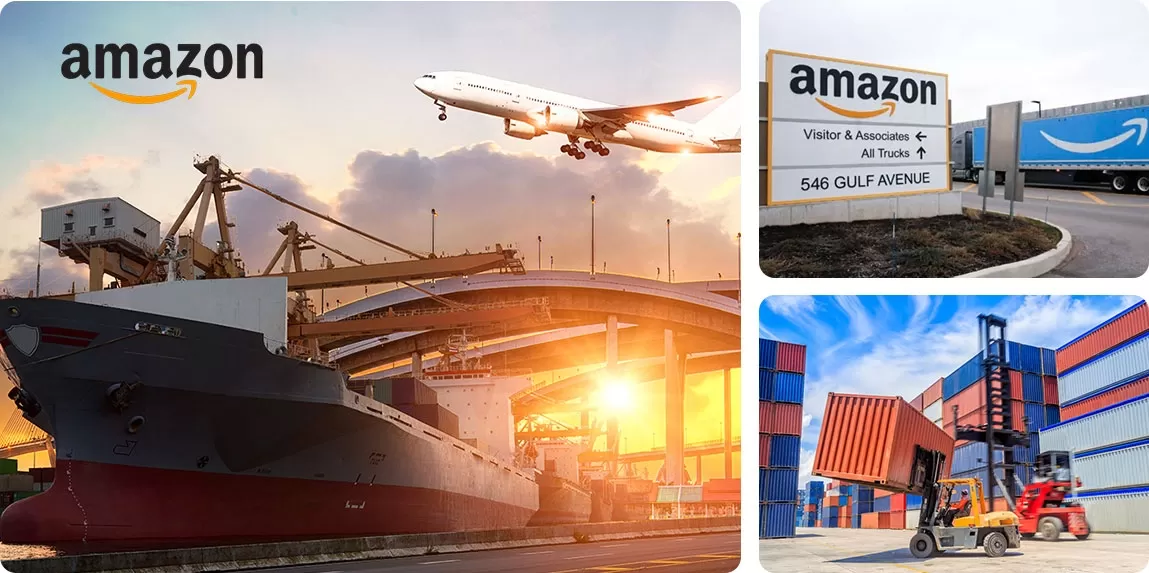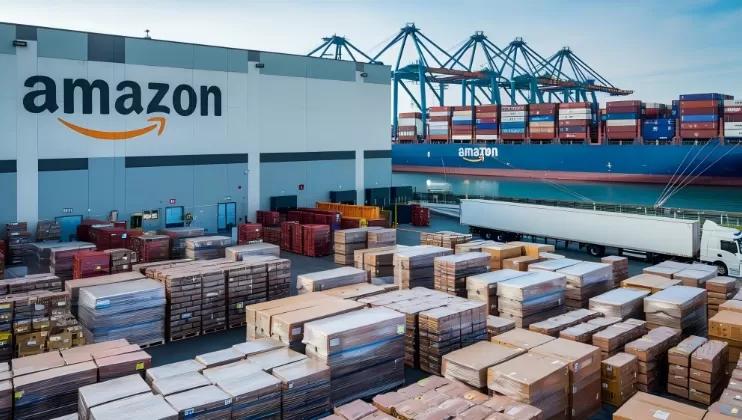Let's be clear:Amazon FBA: Shipping from China to the United Statesis not a shipping service.It's a strategic decision that redefines your relationship with your inventory,your customers,and your profitability.Many sellers are drawn in by the promise of the Prime badge,only to later discover the complex realities of storage fees and loss of control.
This guide is designed for business owners who need more than a simple list of pros and cons.We will provide a clear-eyed strategic assessment.You will learn how to evaluate FBA not as a default setting,but as a powerful—and costly—tool that must be wielded with precision.
Part 1:The Strategic Trade:What You're Really Signing Up For
At an operational level,FBA is simple:you send goods to Amazon;they store,pack,and ship them.Strategically,it's more profound.You are trading direct operational control for access to Amazon's logistics empire and customer base.
This means ceding control over packaging,the final customer experience,and,to a large extent,your profit margins,which are now subject to Amazon's fee structures.Understanding this fundamental trade-off is the first step in building a viable Amazon business.The business model shifts from simply selling products to actively managing a partnership with one of the world's most demanding logistics operators.
Part 2:The Compelling Advantages:Where FBA Delivers Unmatched Value
The benefits are significant,but their value depends entirely on your product and business model.
The Buy Box Algorithm Advantage
This is FBA's most powerful feature.Amazon's algorithm is designed to favor offers that guarantee a superior customer experience.Since Amazon controls the FBA fulfillment process,it inherently trusts FBA listings more than merchant-fulfilled(FBM)ones.For competitive niches,winning the Buy Box is not just an advantage—it's a necessity for visibility.FBA is the most reliable key to unlocking it.
Access to the Prime Economy
The Prime badge does more than signal fast shipping;it acts as a massive trust signal that dramatically increases conversion rates.You are not just selling a product;you are selling the certainty of an Amazon-managed experience.This grants you access to a loyal,high-spending customer segment that often filters search results exclusively for Prime items.
Scalability as a Service
The capital required to build a warehouse network that can deliver to most households within two days is astronomical.FBA allows you to rent this capability.This is its core value for growing brands:you can scale your logistical capacity almost instantly in response to demand spikes or new product launches,without the fixed costs of leasing warehouse space or managing a fulfillment staff.
Part 3:The Operational Realities:Costs,Complexities,and Risks
This is where many analyses fall short.The disadvantages are not just minor inconveniences;they are fundamental business risks.
A Fee Structure Designed for Volume,Not Necessarily for You
Beyond the standard fulfillment fees,the profitability traps are more nuanced:
The Inventory Performance Index(IPI)Straightjacket:Your storage limits are governed by your IPI score.A low score,often caused by slow-moving inventory,restricts how much you can send to Amazon.This forces you to become an expert in inventory forecasting and can punish you for misjudging demand.
Long-Term Storage Fees(LTSF):Inventory that sits for over 181 days incurs punitive fees.For products with seasonal demand or uncertain sales cycles,LTSF can quickly turn slow-moving stock from an asset into a significant liability.
Unplanned Service Fees:If your shipments arrive at the fulfillment center without strict adherence to Amazon's prep and labeling requirements,they will"fix"it for you—at a premium cost that erodes your margin.
The Brand Control Dilemma
You surrender the customer experience.Your product arrives in an Amazon box,often with no opportunity for branded unboxing or inserts.More critically,if you opt-in for inventory"commingling,"your authentic products can be mixed with identical items from other sellers.This means a customer who buys from you could receive a counterfeit or used item from a different seller,leading to negative reviews that damage your brand's reputation with no recourse.
The Cash Flow Trap
Your working capital is physically stored on Amazon's shelves.This capital is illiquid until a sale is made.Mismanaged inventory forecasting can lead to a double catastrophe:cash trapped in unsold stock while simultaneously incurring monthly storage fees that further drain your resources.
Part 4:The Strategic Alternatives:FBA in a Broader Context
FBA is one option in a spectrum of fulfillment strategies. The right choice is never binary.
|
Model
|
Best For
|
Key Consideration
|
|
FBA
|
Fast-moving, high-margin, standard-sized products where Buy Box competition is fierce.
|
You are optimizing for maximum sales velocity on Amazon.com.
|
|
FBM (Fulfillment by Merchant)
|
Large/oversized, very slow-moving, or highly customized products.
|
You maintain full control and a direct relationship with the customer.
|
|
1PL, 2PL, 3PL, 4PL & Beyond
|
Brands selling on multiple channels (e.g., Shopify, Walmart, eBay) who need a centralized, flexible solution.
|
You are building a brand independent of any single marketplace.
|
The Hybrid Approach: Sophisticated sellers often use a blended strategy. They send their best-selling products to FBA to win the Buy Box on Amazon, while fulfilling slower-moving items or orders from other sales channels through a dedicated 3PL. This mitigates risk and provides greater overall supply chain resilience.
Part 5:Making the Decision:A Framework for Your Business
Asking these questions will provide more clarity than any generic list of pros and cons.
1.What is my product's true profitability after ALL FBA costs?Calculate:(Sale Price)-(Product Cost)-(Amazon Referral Fee)-(FBA Fulfillment Fee)-(Estimated Monthly Storage Fee)-(Returns Percentage).If the margin is thin,FBA is likely a path to insolvency.
2.What is my sales velocity?FBA is a tool for velocity.If you sell 10 units a month,storage fees will consume your profit.It is designed for products that turn over quickly.
3.Am I prepared for the compliance burden?Amazon's requirements for labeling,poly-bagging,and case packing are non-negotiable.Failure means rejected shipments and fees.Your entire What's the Cheapest Way to Ship from China,especially your manufacturer,must be aligned with these standards.
Conclusion:FBA as a Strategic Lever
FBA is not inherently good or bad.It is a powerful,expensive lever.The most successful sellers use it deliberately for specific products and strategic goals,not as a one-size-fits-all solution.They understand the trade-offs and constantly run the numbers to ensure the access and velocity provided by FBA are worth the cost and loss of control.Your fulfillment strategy is the backbone of your e-commerce business;choose it with the same rigor you apply to product sourcing and marketing.
Your Next Strategic Move
Optimizing your logistics is a continuous process.Wherever you are in your journey,a strategic partner can help.
Streamlining FBA Inbound?The journey from your factory to the Amazon FC is critical.Get a precise quote for your ocean or air freight How to Pick a Freight Forwarder for Amazon FBA to ensure a seamless,cost-effective landing.
Considering a 3PL Hybrid Model?Diversify your fulfillment to de-risk your business.Explore our flexible 3PL solutions that integrate with your Amazon and multi-channel strategy.
Need a Custom Analysis?Speak with a logistics strategist.We'll analyze your product mix and supply chain to help you build the optimal fulfillment architecture.
FBA Logistics:9 Advanced Q&As
1.Q:How does using FBA impact the due diligence process if I want to sell my Amazon business?
A:It significantly streamlines it.Acquiring a business reliant on FBA is often seen as less risky by buyers.Your fulfillment operation is already systematized and scalable,making the financials clearer to assess.The business is viewed as an asset that can be transferred without major operational disruption,often leading to a higher valuation compared to an FBM-based business.
2.Q:What is the"FBA Dangerous Goods"classification,and how can it catch me off guard?
A:This is a critical compliance area.Many seemingly benign products(e.g.,certain cosmetics,electronics with batteries,household cleaners)are classified by Amazon as dangerous goods.This isn't just about hazardous materials.The classification triggers a mandatory,often lengthy,review process before your listing becomes active.If you're unaware of this requirement,it can delay your product launch for weeks.Always check Amazon's classification system before you manufacture or ship.
3.Q:For products with very low sales velocity,is there any strategic use for FBA?
A:Surprisingly,yes,but only in a specific context.Sending a very small quantity(5-10 units)of a slow-moving product to FBA can be a strategic move to protect your brand.It prevents hijackers from taking over the listing with their own FBA shipments.The minimal storage cost for a few units can be a cheaper alternative to constantly monitoring and defending a vulnerable FBM listing.
4.Q:What are"FBA Reimbursements,"and why do I need to audit them?
A:Amazon's fulfillment network How to solve the US Amazon FBA warehousing customs clearance problem is vast,and errors happen.You are owed reimbursement for lost or damaged inventory,customer returns that weren't sent back,and errors in weight/dimension fees.However,the system isn't perfect.Many reimbursements are not automatically issued.Proactive sellers use third-party tools or manual audits to scan for these discrepancies and file claims.Recovering these funds can be a significant source of recovered revenue.
5.Q:How does FBA handle product recalls?
A:The process is robust but entirely managed by Amazon.If a recall is issued,you must immediately contact Seller Support.Amazon will halt sales,and they can facilitate notifications to customers who purchased the item.However,the cost of removing and disposing of the inventory falls on you.This is a scenario where the loss of control is stark;you are reliant on Amazon's system to execute the recall effectively.
6.Q:What is the strategic difference between"Seller-Fulfilled Prime"(SFP)and FBA?
A:SFP allows you to display the Prime badge while fulfilling orders yourself from your own warehouse or a 3PL.The key difference is control.With SFP,you maintain control over the shipping carrier,packaging,and customer experience.The trade-off is the immense pressure:you must hit Amazon's strict delivery targets(on-time shipping,weekend delivery)with near-perfect metrics,or you lose the badge.FBA is easier for Prime eligibility;SFP is for sellers who need Prime but require fulfillment flexibility for multi-channel sales.
7.Q:Can I use FBA for products that require assembly or complex kitting?
A:Generally,no.Amazon's system is designed for picking and shipping single SKUs.If you sell a"bundle"comprising Product A and Product B,you must create it as a new,unique ASIN before sending it to FBA.The assembly or kitting must be done by you,your supplier,or a third-party prep service before the items arrive at the fulfillment center.Amazon will not perform this value-added service.
8.Q:How do"FBA Export"orders work,and what are the implications?
A:By default,your FBA inventory can be purchased by customers in other countries through Amazon's Export program.This sounds great,but it introduces complexity.You are responsible for understanding and complying with export regulations.Crucially,you often have no control over the international shipping costs charged to the customer,which can be prohibitively high and lead to unexpected returns or negative feedback for issues outside your control.
9.Q:What is the"FBA Donations"program,and is it a good option?
A:Instead of paying for the disposal of unsellable returned inventory(e.g.,customer-damaged goods),Amazon will automatically donate them to charities.This is often cheaper than paying the removal fee.While it's a socially responsible option,it provides no financial recovery.For products with any recoverable value,using a liquidator might be a better financial decision,even if it requires more effort.

 EN
EN
 FR
FR
 ES
ES
 JA
JA
 PT
PT
 RU
RU
 AR
AR






